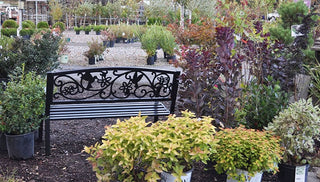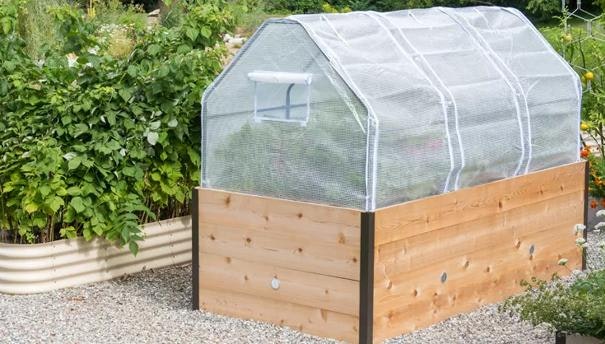We often think of spring as the ideal time to plant, and in many cases it is. However, autumn provides a second — and sometimes better — opportunity to get trees, shrubs, and perennials in the ground.
5 Reasons Why Fall Is A Great Time To Plant
1. Air temperatures are cooling...
Extreme heat and harsh sunlight force plants to take up abundant water to stay hydrated. In extreme cases, plants can't take in enough water and can wilt from the stress, even if soil is moist. In contrast, the cooler temperatures and less intense sun in autumn makes it a lower-stress time for new plants to get established.
2. ...but soil is still warm
Air temperatures may cool down to freezing or below, but the soil remains warm for weeks. This warmth encourages root to grow out into the surrounding soil so they're established and ready for a new flush of growth in spring.
3. Stress less over water
Autumn brings cooler weather, which means less moisture evaporation — soil stays damp longer. Plants are photosynthesizing less (meaning they can get by on less water) as they switch from putting out new leaves to growing deeper roots. For many regions, fall also brings regular seasonal rains.
4. Plants can focus on roots
Because vegetative (leaves and shoots) growth is slowing and entering a dormant phase, plants are able to direct their energy toward growing robust roots. Once spring arrives, your plants will be well-established and ready for flowers and foliage.
5. Feed pollinators and wildlife
Flowers are abundant in spring and early summer, but bees, beneficial insects, and birds need food and habitat year-round. By popping new plants in the ground mid-fall, you provide a source of nectar and shelter during a time when
 In an effort to clear out their nurseries, most garden centers offer DEEP discounts on gorgeous shrubs, trees, and perennials in the fall.
In an effort to clear out their nurseries, most garden centers offer DEEP discounts on gorgeous shrubs, trees, and perennials in the fall. A wire basket holds the fabric in place on this balled-and-burlapped yew.
A wire basket holds the fabric in place on this balled-and-burlapped yew.Top Tips for Successful Fall Planting
Don't wait too late: Aim to get plants in the ground at least six weeks before the ground freezes. In all but the coldest regions, you can plant up until early November.
How you plant is as important as when you plant: Learn proper planting techniques for trees and shrubs. Be sure to water plants as needed to keep the soil moist to the depth of the root ball, continuing to water until the ground freezes.
Mulch!: Apply a 2-3" layer of organic mulch (e.g. shredded leaves, pine straw, or bark chips) around plants, keeping it several inches from the stems or trunk. This conserves moisture and helps prevent winter freeze-thaw cycles that can stress plants.
Don't forget bulbs: For most gardeners, fall is the time to plant spring-flowering daffodil, tulip, crocus, and hyacinth bulbs — these plants actually need the chill time.
Be patient: You won't see much, if any, growth in fall, and growth may be somewhat slow to start in spring compared to more established plants.
 Potted roses like these do well when planted in autumn.
Potted roses like these do well when planted in autumn. Coralbells are hardy perennials available in an astonishing range of foliage colors.
Coralbells are hardy perennials available in an astonishing range of foliage colors. Add winter interest to your landscape with evergreens in a variety of sizes, shapes, and colors.
Add winter interest to your landscape with evergreens in a variety of sizes, shapes, and colors.



